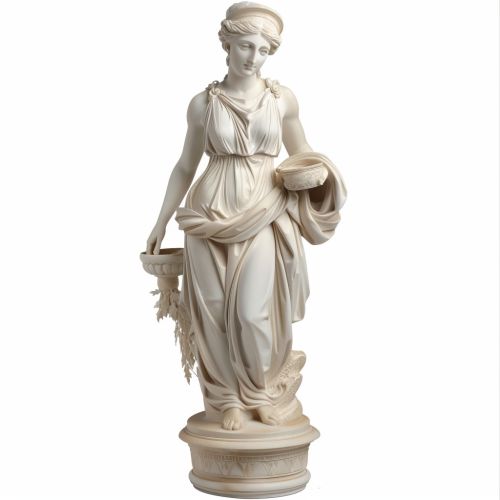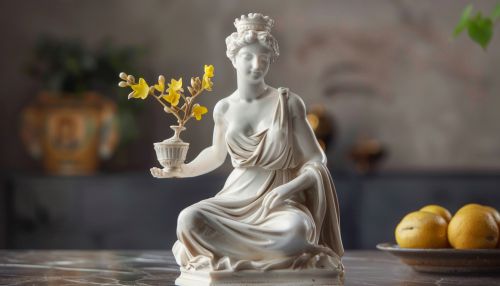Hestia
Introduction
Hestia, in ancient Greek religion, is the goddess of the hearth, home, and domesticity. She is one of the twelve Olympian deities and is often depicted as a modestly veiled woman. Hestia's role in Greek mythology is unique as she represents the stability and sanctity of the household and the state. Her worship was central to both private and public religious practices, emphasizing the importance of the hearth as a symbol of unity and continuity.


Mythological Background
Hestia is the daughter of the Titans Cronus and Rhea, making her a sister to other prominent Olympian gods such as Zeus, Hera, Poseidon, Demeter, and Hades. According to myth, she was the first to be swallowed by Cronus and the last to be disgorged, thus being both the eldest and the youngest of the Olympian gods. Her name means "hearth" or "fireside" in Greek, signifying her domain over the hearth and home.
Role and Attributes
Hestia is primarily known for her role as the goddess of the hearth. The hearth was the central part of the home in ancient Greece, serving as the place for cooking, warmth, and family gatherings. As such, Hestia's presence was integral to the daily lives of the Greeks. She was also associated with the sacrificial flame and was often invoked during domestic rituals and state ceremonies.
Hestia is often depicted as a modest woman, veiled and holding a staff or a flame. Unlike other Olympian deities, she is not involved in many myths or adventures, reflecting her role as a stabilizing and non-confrontational deity. Her virginity is another significant aspect, symbolizing purity and the sanctity of the home.
Worship and Rituals
Hestia's worship was widespread in ancient Greece, both in private homes and public spaces. Every household had a hearth dedicated to Hestia, and it was customary to offer the first portion of any sacrifice to her. Publicly, her flame was kept burning in the prytaneion, the town hall of a city-state, symbolizing the unity and continuity of the community.
One of the most important rituals associated with Hestia was the Amphidromia, a family festival held on the fifth or seventh day after the birth of a child. During this ceremony, the father would carry the child around the hearth, dedicating the newborn to Hestia and seeking her protection.
Hestia in Literature and Art
Hestia's presence in Greek literature and art is relatively sparse compared to other Olympian deities. However, she is mentioned in the Homeric Hymns, where she is praised for her role in maintaining the sanctity of the home. In art, she is often depicted as a serene and modest figure, reflecting her peaceful and stabilizing nature.
Hestia's Influence in Roman Religion
In Roman religion, Hestia was known as Vesta. The worship of Vesta was central to Roman domestic and state religion, much like Hestia in Greece. The Vestal Virgins, a group of priestesses dedicated to Vesta, played a crucial role in maintaining the sacred fire in the Temple of Vesta in Rome. The Vestal Virgins were highly respected and held significant influence in Roman society.
Modern Interpretations and Legacy
Hestia's legacy continues in modern times as a symbol of home and family. She represents the importance of stability, unity, and domestic harmony. In contemporary literature and art, Hestia is often portrayed as a nurturing and protective figure, embodying the ideals of home and hearth.
